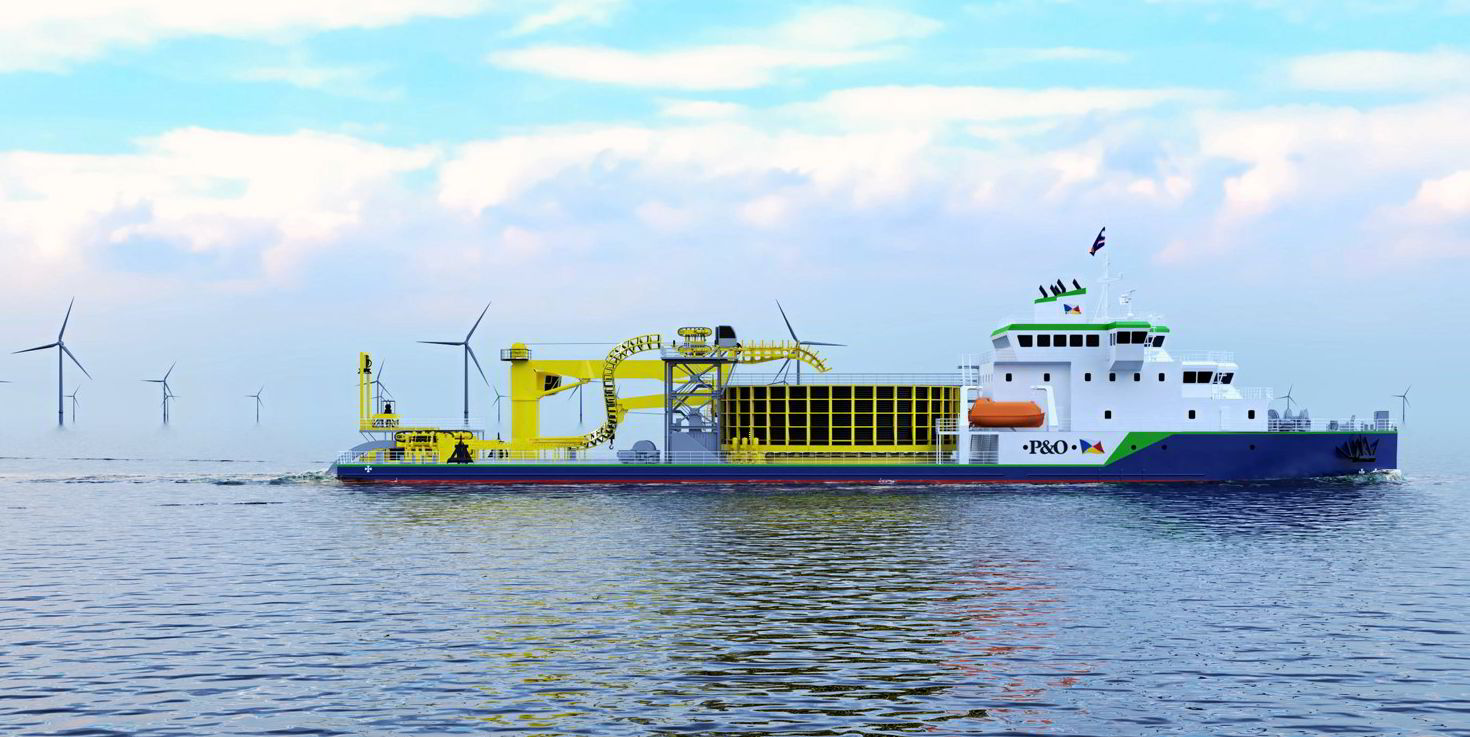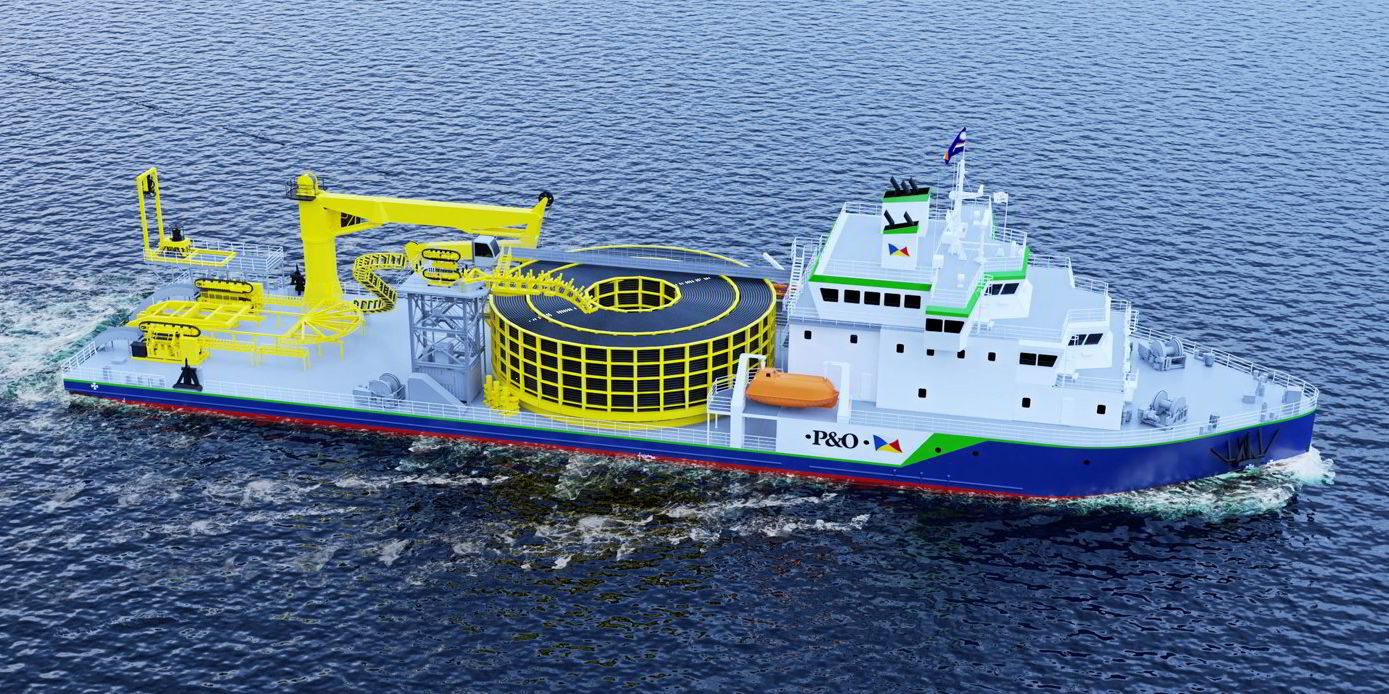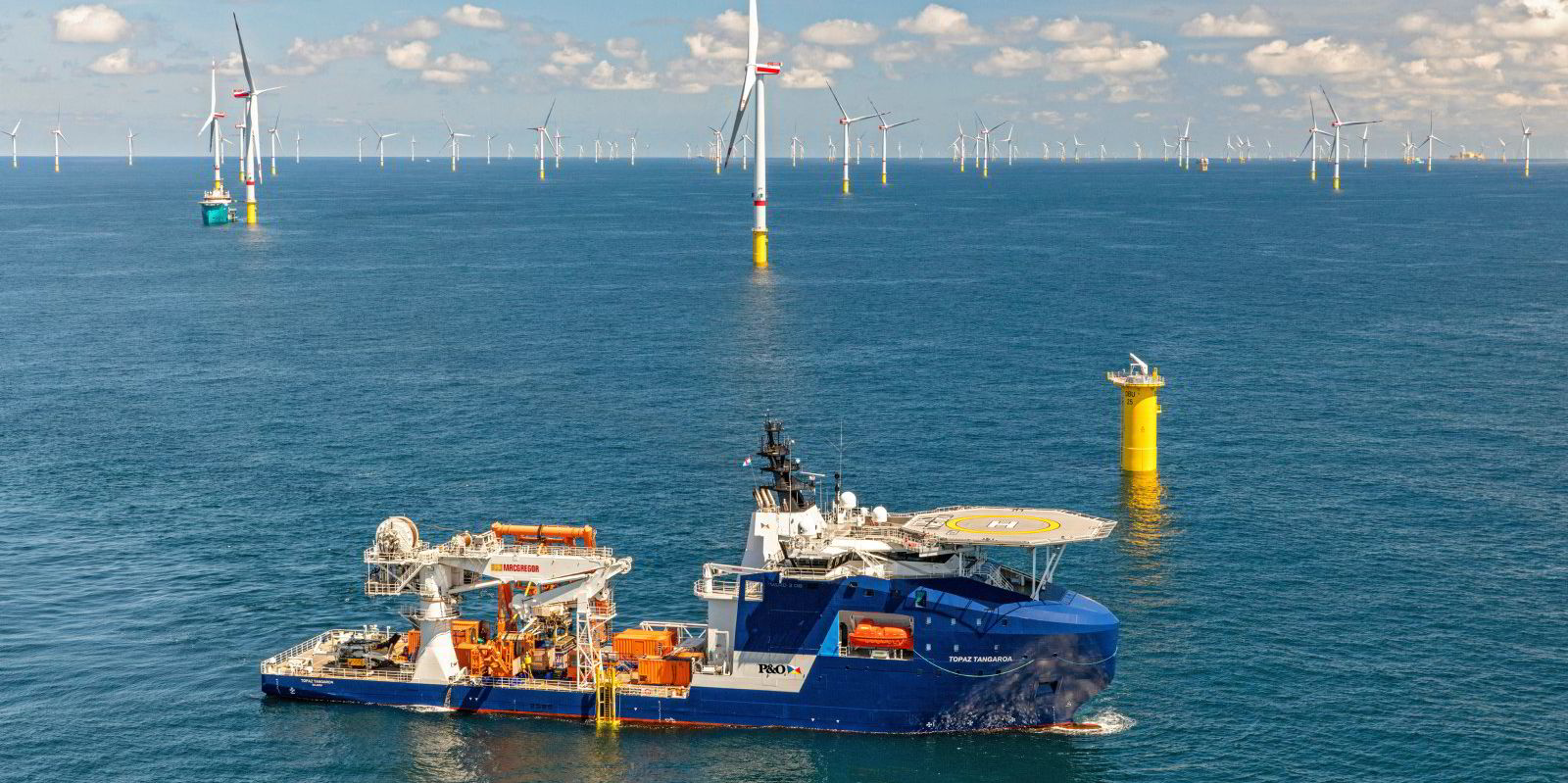Dubai-based offshore giant P&O Maritime Logistics and Services is to expand its small foothold in the wind energy sector with a “step changing” zero-emission cable-laying vessel.
The company will convert one of its multi-carrier cargo vessels for the role, equipping it with alternative energy power systems.
The ship will emerge in the third quarter of 2024 with a state-of-the-art battery system, as well as a low-fuel consumption propulsion layout for green methanol fuel.
Specialist cable-laying equipment will give the ship the ability to connect offshore structures and bring offshore energy onshore by installing export and inner array cables across vast distances.
The company said it anticipates that one of the main uses of the vessel will be to connect offshore wind farms with the mainland, “marking yet another contribution in the company’s effort to enable the Green Energy Shift”.
P&O Maritime chief executive Martin Helweg described the conversion of the vessel as “a real step change”.
“It means, apart from expanding our existing services and products into a more specialised offering, that we can also make a positive contribution to the decarbonisation of our industry. One way of doing this is by using alternative energy to power the converted vessel. The other important contribution is that the cable-laying vessel will predominately support the construction, development and maintenance of existing and prospective wind farms,” he said.

Helweg also pointed out that by repurposing an existing vessel, “we are able to extend the lifetime of this particular product quite significantly to keep up with the increasing demand in the sector”.
While P&O Maritime did not identify which specific ship is to be converted, it said the vessel would emerge from its conversion with the ability to host up to 64 seafarers and will feature a single basket cable carousel with an outside diameter of 24 meters, as well as a 30-tonne SWL AHC subsea crane.
The conversion project is being carried out in partnership with C-Job Naval Architects, whose project manager Marc van der Zwaluw said the vessel will be able to meet the operational demands for the installation of next-generation windmill infrastructure thanks to its optimised deck layout.
“The design focused on optimised vessel performance and features a DP2 positioning system and a low fuel consumption propulsion layout that is ready for green methanol fuel and zero-emission operations,” he said.
The conversion builds on the company’s recent success in the Taiwanese offshore wind sector with the 4,900-gt cable layer Topaz Installer.





